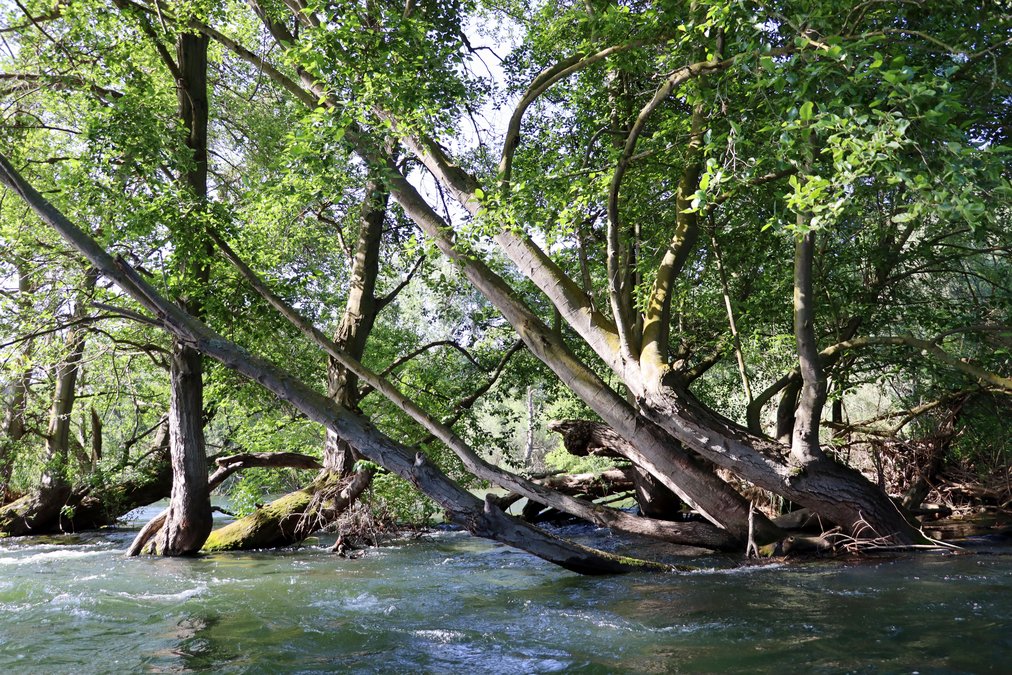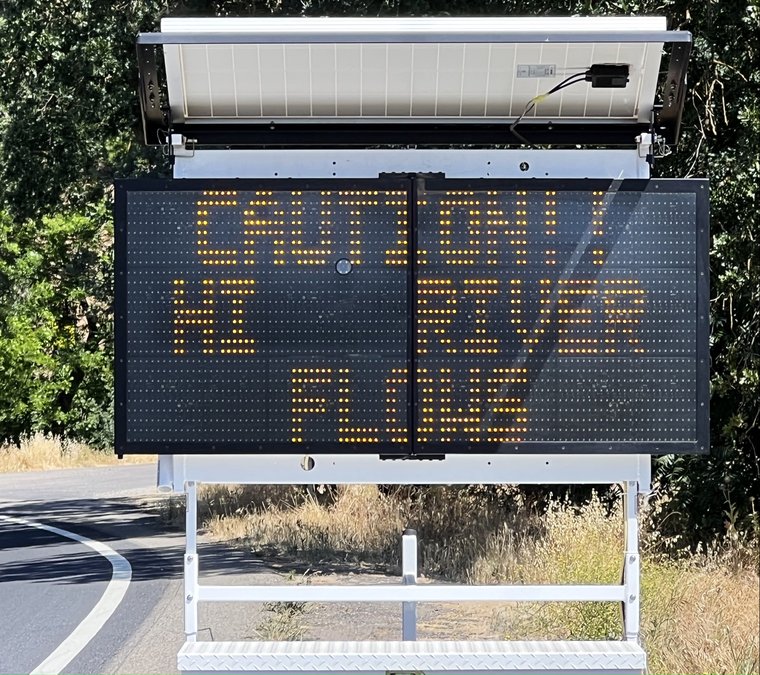We’re traveling east Friday morning on the wonderfully swollen Stanislaus River.
As we make our way upstream, the wind and mist tickle our faces, while the sun hangs low in the bright blue sky, just beginning its workday.
After this winter’s storms, the water is deep, cold, and moving rapidly.
Freelance photographer Samantha Schmidt and I have been invited by Stanislaus County Sheriff Jeff Dirkse to ride along with Deputies Randon Kirkbride and Mike Ghimenti as they patrol the river in the department’s new MotoJet 16.5-foot patrol boat, designed specifically to handle the rugged Stanislaus and Tuolumne rivers, as well as the Modesto and Woodward reservoirs — the bodies of water patrolled by the department’s Special Vehicle Operations Unit.
The boat is ripping through the water at a white-knuckle 30 mph, deftly swerving to avoid rocks, logs, and low-hanging tree branches. It feels like we’re going twice as fast, and we could if Ghimenti so desired. The welded-aluminum boat is equipped with a 250-horsepower, 1,800-cubic centimeter, supercharged Yamaha jet-ski engine.
When Ghimenti asks … it answers.
In just about two hours on the water, starting from the Orange Blossom Recreation Area (off Highway 120 between Oakdale and Knights Ferry), past the Honolulu Bar and Horseshoe Road recreation areas and toward a spot known as The Bluffs, we encounter not one other soul.
But that wasn’t the case in late May, when the deputies made three water rescues over the Memorial Day holiday weekend. And it certainly won’t be the case in the coming months, as more and more locals will be looking to beat the heat in the county’s favorite tributary.
“Other counties, both Merced and San Joaquin, have actually closed their rivers,” said Dirkse. “I have not done that and I don’t want to do that. Coming out of COVID, I’m just a little opposed to doing so, because it makes life a little difficult. We have messaging and social media and signage up at all the rivers, indicating that river flows are extremely high and dangerous. And if you don’t have the correct equipment, or training, or experience — don’t get in the water.”
Let’s face it: the Central Valley is essentially a desert and some people are going to get in the water to stay cool, no matter what the signs say. This is especially the case with neighboring counties having shut down river access due to dangerous conditions.
The deputies point out that with so many entry points along the river, it’s impossible to fully restrict access.
That’s where the patrol boat comes into play. With its speed — the deputies responded to one call last weekend before other emergency personnel could even launch their rigid inflatable boat — and nimbleness, the MotoJet allows the department to cover more area, very quickly. The center-console model also is equipped with special pads to protect the bottom of the boat and allow it operate in about two inches of water.
“It’s food-grade cutting-board material,” said Patrick Riddle, a sales rep for the Lewiston, Idaho-based MotoJet. “Essentially, it’s like a Kevlar vest for the boat, absorbing a lot of the impact and protecting the hull.
“This is the first boat we’ve ever built for a law-enforcement agency. Hopefully, we’ll be getting more law-enforcement bids.”
According to Shiloh Foust, owner of Sunshine Rafting Adventures in Knights Ferry, the Stanislaus River is moving at 1,500 cubic feet per second.
“Fifteen hundred CFS isn’t even abnormal for this time of year,” said Foust. “A high spring flow would be 2,000 to 2,500.”
But Foust warned that safety should never be ignored.
“The biggest factor between a safe trip and an unsafe trip is wearing a life jacket,” Foust said. “I know it’s not sexy, but it’s the one thing that can drastically increase your odds of having a safe trip. I can’t stress that enough.”
Kirkbride, a 21-year veteran of the Sheriff’s Department, and Ghimenti, a seven-year veteran, back up that assertion.
Of the three rescues they made Memorial Day weekend, one was a response to a radio call, another happened when they were waved down by someone in distress, and the third involved a person not wearing a life jacket — a scenario that unfolded right before their eyes.
The deputies were watching a group of revelers who’d been jumping into the river from the bluffs, all wearing life jackets. Later, while relaxing, the life jackets came off. When one fellow dropped his bag of gummy worms into the water, he dove in to retrieve the treats.
“He got caught up in the current,” said Kirkbride. “After a while, he called out to us and said, ‘I think I’m going to need your help.’”
After telling us that story, Ghimenti drives us to the same location so we can see the conditions for ourselves.
“Is this the exact spot where you had to rescue the guy who dove in after his gummy worms?” I ask. Both deputies indicate that it was.
I look around and quickly realize that I would have made the same mistake. The water is moving briskly, but it’s inviting, too. There is no white water. It appears manageable.
“Most people think they can swim much farther than they actually can, and they quickly get themselves into trouble,” said Dirkse. “The water is way colder than most people realize. And there are lots of hazards under the water that you can get caught in. Combine that with the current and you can’t get out of it. People need to be careful.”
Turlock Irrigation District is also reminding people to be careful, and that canals are not ever intended for recreation.
“While the river is running quickly, canals are not a good alternative to cool off,” said Brandon McMillan, Turlock Irrigation District communications specialist. “Canals will also be full and moving quickly and are not safe places for anyone to swim in or play around — no matter how good a swimmer you are.”
As of June 1, TID released water to the Tuolumne River in coordination with other San Joaquin River tributaries, according to McMillan. It’s expected that the Tuolumne and other rivers will remain high throughout the summer.
“TID urges the public to use extreme caution around the Tuolumne River this summer,” said McMillan. “Due to historic rain and snowfall, the river is moving much quicker and is colder than normal at this time of year.”
Kirkbride and Ghimenti both are avid outdoorsmen.
“I’ve been on boats my whole life,” said Ghimenti. “Wakeboarding, wakesurfing, all that good stuff.”
They’re well aware that their assignment isn’t without some perks.
“It’s a nice change of pace from normal patrol,” said Kirkbride. “You look around at the scenery and you go, ‘I can’t believe I’m getting paid to do this.’ But then it goes from that to jumping into the water and having to grab somebody.”









